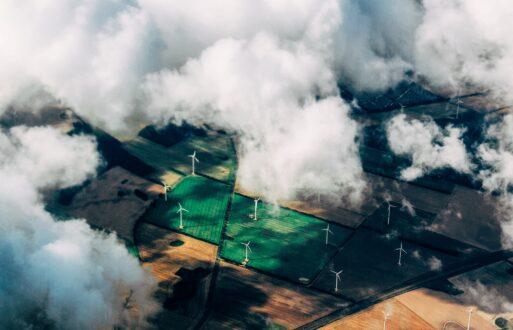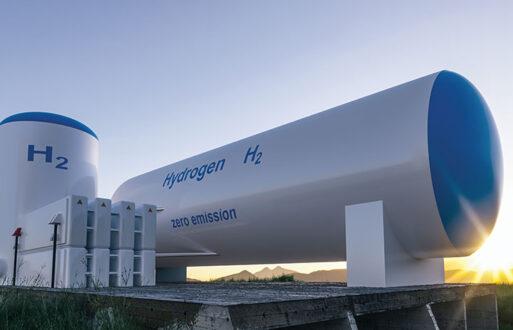A Two-Part Blog Series
Part 1: Fundamentals of Natural Gas Production, Transportation, & Scheduling
It’s well-known that, in many electricity markets, natural gas-fired power is overwhelmingly used to fill in gaps between the steady output baseload providers (coal and nuclear) and intermittent renewable energy generators. The huge build-out of combined cycle power plants from the late 1990s to today placed a large quantity of gas-fired capacity in operation. Because of its cost structure and flexibility, gas combined cycle-fired electric power is “on the margin” most of the year, meaning this capacity is dispatched to meet the daily swings in electricity demand.
Since 90% of electricity’s cost is attributed to the cost of the underlying fuel, spot prices for electricity generally follow gas prices. Therefore, to be successful, professionals in the electricity market must have an excellent understanding of the forces behind gas prices.
This blog post, the first of three, will explore some of the basics of natural gas exploration, production, transportation, and the mechanisms of procuring and scheduling gas for power generation. In subsequent articles, we will explore mid-office functions like position management and hedging and back-office settlements activities.
Gas Formation & Extraction
As most are aware, natural gas and oil were formed eons ago due to the anaerobic decomposition of plant and animal matter under pressure and heat, both on land and in the layers of sediment in the ocean floor. Subsequent natural phenomena in the Earth’s crust led to the bending and folding of the layers of sediment. As a result, oil and gas-containing layers sloped upwards in places, and water displaced these components from lower regions. This formed reservoirs of gas and oil in areas closer to the surface.

Conventional methods for extracting natural gas simply drill into reservoirs that hold both oil and gas, which require separation. The gas component is called “associated gas,” although some reservoirs contain only gas (known as “non-associated gas”). Typically, there are many extraction points in a given field. Thus, a gathering system is built to carry raw gas to a common collection point and then pass it on to a gas refinery for clean-up before transporting it over intrastate and interstate pipelines.
Gas and oil extracted from shale have slightly different origins. Over millions of years, organic materials were trapped in layers of clay deposited in river deltas. This clay eventually turned into shale, which slowly transformed into oil and gas locked within the structure of the rock itself. Some of these layers can be up to 10,000 feet below the surface, making it impossible to simply drill into a shale layer and tap the gas trapped within. Instead, it must be fractured by highly pressurized water to liberate gas and oil. Water is again utilized to displace these components that are then pumped to the surface where the gas and oil enter identical gathering systems, following the same path through refining and clean-up.
Finally, methane is also extracted from coal beds. Once more, water is used to displace this gas, which has the advantage of easier clean-up due to lower amounts of (other) hydrocarbons and sulfur.
Refining & Transport
In the gas refining step, water and oil are first physically separated from raw gas. This is followed by several other processes that remove non-petroleum gases, sulfur, other contaminants, and natural gas liquids – a class of hydrocarbons lighter than most petroleum but heavier than the methane and ethane that make up pipeline-grade natural gas.

Once refined, pipelines transport the compressed natural gas across the country to cities and industries for use. Hundreds of compressor stations are situated along the pipelines at intervals to re-compress the gas and speed it along its way. Re-compression can use electric compressors or gas-fired compressors that tap some of the pipeline gas for fuel.
The destinations for this gas include:
- Large industrial customers (e.g., power plants and chemical industries)
- Storage facilities (usually underground, in salt domes, or other geologic formations)
- Natural gas distribution companies then odorize the gas, reduce its pressure, and distribute it to retail customers in their service area.
Procurement & Scheduling
To procure gas across the pipeline system, power companies, local gas distribution companies (LDCs), and industrial customers have contracts for (a) transporting gas to their facilities and (b) procuring the actual gas commodity for delivery across the pipeline.
Pipeline contracts generally cover the quantity of gas that can be transported across the pipeline, denominated in $/MCF, plus charges for re-compression fuel gas, the scheduling process, etc.

The procurement of gas by marketers is accomplished through supply contracts that have standard provisions applicable to (but not limited to) quantities, sources, time frames, and transactions. The North American Energy Standards Board (NAESB) maintains a template for these contracts to ensure that the hundreds of players in the market can utilize common language and terms in business transactions. Thus, most gas supply contracts are referred to as “NAESB contracts.”
Although much natural gas is purchased and transported monthly (or over a longer-term), fixed-level transactions to cover baseload needs – representing a large quantity of natural gas – are procured daily. The “gas day” in North America begins at 10 am Eastern Standard Time. All gas flow quantities, transactions, and other business is segmented according to this schedule. The timing presents some issues with the gas used for electricity generation purposes (since the electricity day is generally midnight to midnight and is specific to a particular electricity market).

As a result of this temporal mismatch, for any given electricity day, buyers must procure gas two days before for all power generated before 10 am (EST) and one day ahead for power produced after 10 am (EST). Moreover, this mismatch issue is complicated over weekends (when gas trading is generally suspended), during which gas bought on Friday morning covers requirements over Saturday, Sunday, and Monday.
When national holidays fall on Monday, buyers are procuring gas through Tuesday. So naturally, challenges arise when generation forecasts change during that time frame, leading to imbalances in the amount purchased and used. Imbalances are handled through various contract provisions. Alternatively, certain “intra-day” transactions can be made to procure, schedule, and deliver gas during the operational day.
ETRM Solution
In most companies, this complex interaction between procurement, transportation, scheduling, and accounting is handled by automated systems. Consequently, a comprehensive ETRM solution is crucial for navigating the evolving challenges in today’s volatile and uncertain energy markets.
Automation of trade capture, managing transportation contracts, efficient scheduling to avoid potential pipeline penalties and losses, capacity limitations, and more is required by natural gas professionals to manage operational and financial risk. PCI’s integrated ETRM solution supports the following essential functions:
- Trade Capture
- Confirmation Process
- Transportation Management
- Scheduling Automation
- Storage Modeling
- Position Management
- Counterparty Credit
- Meter Management
- Settlements & Invoicing
- End-of-Month Process
- Data Reporting & Analytics
In the next blog, we will explore financial tools to manage the price risk of natural gas and the essential elements of a risk management program. Finally, the third article will focus on the settlement of gas transactions and related activities.
Learn more about our ETRM solution.
ETRM – Gas Management Best Practices: A Two-Part Blog Series
- Part 1: Tracking Natural Gas Production Needs a Comprehensive ETRM Solution < You are here
- Part 2: Natural Gas Mid-Office Functions & Energy Hedging
Key Terms to Know
- Conventional natural gas: gas found in reservoirs, with or without oil
- Unconventional natural gas: gas locked in tiny pores in shale, sandstone, or other sedimentary rock.
- Sour gas: natural gas containing >4 ppm hydrogen sulfide (H2S)
- Hydraulic Fracturing: the process of using high-pressure water to break up formations of rock (shale and sandstone) to release gas and oil contained within it. Water is injected at tremendous pressure (up to 12,000 psi) to fracture the rock. Sand is injected with the water and keeps the fractured rock permeable so that hydrocarbons can flow freely from the rock matrix out to the collection pipe.
- City Gate is the pipeline system point where the pipeline officially hands off the gas to the retail gas company. This is usually the metered point for deliveries, the point for odorization, and so forth.
- Odorant: the chemical compound added to natural gas when it enters a distribution system for retail customers. As natural gas is odorless, the odorant is added to help with leak detection.
- Confirmation: electronic notification between transaction counterparties listing the relevant terms such as quantity, timing, price, delivery point, etc.
- Upstream: the process of exploring, drilling, and bringing oil and gas to the surface.
- Midstream: the transportation of gas and oil from production facilities to the refinery, whether by pipeline, truck, railcar, or ship.
- Downstream: the production of finished product from a raw feedstock of oil or gas or gas delivery to end-use customers.
- Local Distribution Company (LDC): The entity that physically delivers gas to customers through its network of mains and supply lines. The LDC also meters the gas, bills the customer, and collects payment. LDCs purchase gas from gas marketers and schedule delivery across gas pipelines to an intake point (aka -“City Gate”), then odorize the gas before distribution.
About the Author
John Bonnin has 25+ years of energy industry experience; 15 with CPS Energy in San Antonio (TX), where he directed the Day Ahead/Real-Time activities of Energy Supply & Market Operations. John’s team focused on managing market risks to native load customers and optimal dispatch of the CPS Energy power generation fleet. He has a Master of Science in Management/Computer Resource Management from Webster University and a Bachelor of Science in Chemistry from Louisiana State University.
You May Also Be Interested in:
- COLLECTIVE INTELLIGENCE & THE ENERGY TRADING FLOOR OF THE NEW DECADE
- THE POWER OF ONE: THE BENEFITS OF SINGLE-SOURCING SOFTWARE SOLUTIONS
- TODAY’S ESSENTIAL SOFTWARE & WHY YOU NEED IT: CONFIGURABLE CONTRACT MANAGEMENT
- 7 HABITS OF HIGHLY EFFECTIVE GENCOS #7: TRADING & POSITION MANAGEMENT







